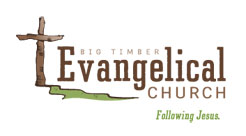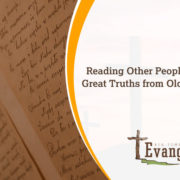Reading Other People’s Mail: 1 John – Day 1
Introduction to 1 John
1 John is one of three letters written by John, son of Zebedee, one of the original 12 disciples. He was a fisherman, like Peter and several of the others. He was also one of the 3 disciples that were closest to Jesus. Both he and his brother James became followers of Jesus.
John’s name appears in all of the Gospels and the 4th Gospel, the one that bears his name, is his own eyewitness account of the life of Jesus. John, along with Peter and James were present during most if not all of the significant events of Jesus’s ministry. They alone were with him during the transfiguration (Matthew 17; Mark 9; Luke 9). They were also alone with Jesus while Jesus was praying in Gethsemane (Matthew 26:36-46).
It was John, at the foot of the cross, who was given the responsibility of caring for Mary the mother of Jesus. Jesus’s other family members were nowhere to be seen when he was crucified. His half-brothers, James and Jude, were not followers and did not believe in his ministry. They came to believe after the resurrection. It was John who was at the foot of the cross with Mary and it was John to whom Jesus committed the care of Mary.
John was extremely influential in the early church both because of his writings and because he outlived all of the other disciples. He was the long-term pastor of the churches around Ephesus and John was the only disciple to live a full life. All the rest were martyred. He was exiled, by Emperor Domitian, to the island of Patmos, but his writings continued to instruct the church. He wrote Revelation while in exile.
These letters remind us that not all was well in the early church. Even though John was one of the eyewitnesses of Christ’s life, he still found himself dealing with opposition. Opponents had split the church and continued attempts to steal the remaining flock. They were twisting John’s own teaching to teach “new things.” These teachers were denying many of the key aspects of Jesus’s life and ministry and teaching.
John writes this letter to help his congregation navigate their way through this terrible storm.
Day 1 – 1 John 1
Take some time to Read 1 John chapter 1
John opens his letter rather abruptly. No formal introduction. No hello, my name is… just, “That which was from the beginning…”
This opening phrase should ring familiar. The Gospel of John begins in a similar way with, “In the beginning…” John’s letter has a lot of the same kind of wording as his gospel. For instance, the words light and dark appear in both places. In this letter, he reminds us that “God is light; in him there is no darkness at all.” In chapter 1 of his Gospel, he tells us that John the Baptist came to be a witness to the light. We find that the light that John the Baptist talks about is Jesus.
One of John’s main concerns is that Jesus’s story and testimony be told well and without distortion. So much of the purpose of this letter is to encourage the church to stick to the truth about Jesus Christ—without following those who would attempt to distort Jesus.
John’s first line of defense is his own history with Jesus. The first paragraph is full of evidential language. John tells his readers, “we have heard… we have seen with our own eyes… we have looked at and our hands have touched…” and this is what we proclaim to you.
In essence, John is saying, “this isn’t a clever invention. It’s not something made up. This isn’t a fable, fairy tale, or even religious philosophy.” This is the testimony that we heard, saw, and touched. And because we saw it we believe it and we proclaim the Word of Life. The title, Word of Life, that we see here also points us back to the first chapter of the gospel of John. In the gospel, John tells us that the Word (Jesus) became flesh and dwelt among us.
John wants his readers to understand that his message has never changed. All of the disciples, including him, were eyewitnesses and as eyewitnesses, they don’t need to tell a different story. The one story that they observed is so beautiful, so wonderful, and so full of God that it needs no further elaboration.
The whole purpose of John’s life is to bring his readers into that same story that they may be in fellowship with the disciples which in all reality is also “fellowship with the Father and with his Son, Jesus Christ” (1 John 1:1-4).
It’s Always Better to Walk in the Light
Darkness is no fun at all. Walking in the dark can be downright dangerous. For John, that’s not just true in everyday life. It’s true of one’s spiritual life as well. Because God is light, in whom there is no darkness, we should want to walk with him, in the light.
Light and darkness cannot coexist. We know that as truth because we see it every time the sun rises. Light always wins. It always drives away the darkness. John’s point here is the same. Light drives away the darkness. The two cannot coexist and so a person who claims to follow God but continues in evil cannot be in the light. They can be deceived, but they cannot be in the light.
John isn’t saying that Christian’s are without sin. He is saying that Christians are continually sensitive to sin. They live lives of confession and repentance. They take their hurts and inadequacies to God so that they can be forgiven (1 John 1:9-10). And praise God, we have that forgiveness available each day. We are not in the light because we are perfect. We are “in the light” because we are always going to God for cleansing. We are “in the light” because we are pursuing him in worship and obedience.
Application:
 John begins his letter saying, “we have heard, we have seen, we have touched…” what we proclaim to you. How does this eyewitness testimony help you to understand the importance of the Bible, God’s Word?
John begins his letter saying, “we have heard, we have seen, we have touched…” what we proclaim to you. How does this eyewitness testimony help you to understand the importance of the Bible, God’s Word?- What does it look like for you to come to God today? What does it look like for you to “walk in the light” (v. 7)?
- John tells us that “if we confess our sins, he is faithful and will forgive us our sins and cleanse us from all unrighteousness” (v. 9). What are your besetting sins? What are your areas of weakness? What would it look like for you to confess them to Him?
Verse 9 is a wonderful promise. We told that when we bring our sin to God, that he brings his cleansing to us. Forgiveness is always a gift. We don’t have to earn it. We do need to confess it. It’s like a great exchange. When we bring our sin to him, Jesus takes it. What he gives us in return though is his forgiveness. We never leave the presence of God without his gifts. The awesome terrible thing is that he gets our worst and we get his best. Wow! We definitely get the better end of that deal!
What would you say to God based on your reading today? Take some time to talk to God in prayer.
Consider writing down a key verse or verses from today on an index card or small piece of paper and carry it with you today. Look at it as often as you can as a reminder of what we learned today.
Possible Verses: 1 John 1:5; 1 John 1:7; 1 John 1:9





